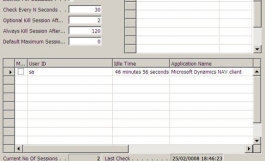How tos
How To use a progressbar in Dynamics NAV?
- Author
- Alain Krikilion (alias kriki)
- Website
- http://mibuso.com/blogs/kriki
- Date
- 13/02/2008
- Size
- 4,48 KB
- Downloads
-
3288
Detailed statistics
- Downloads today 1
- 30 day downloads 26
- Total downloads 3288
- Overall download rank #232 / 2084
- Today page views 1
- 30 days page views 12
- Total views 24818
- Rating







